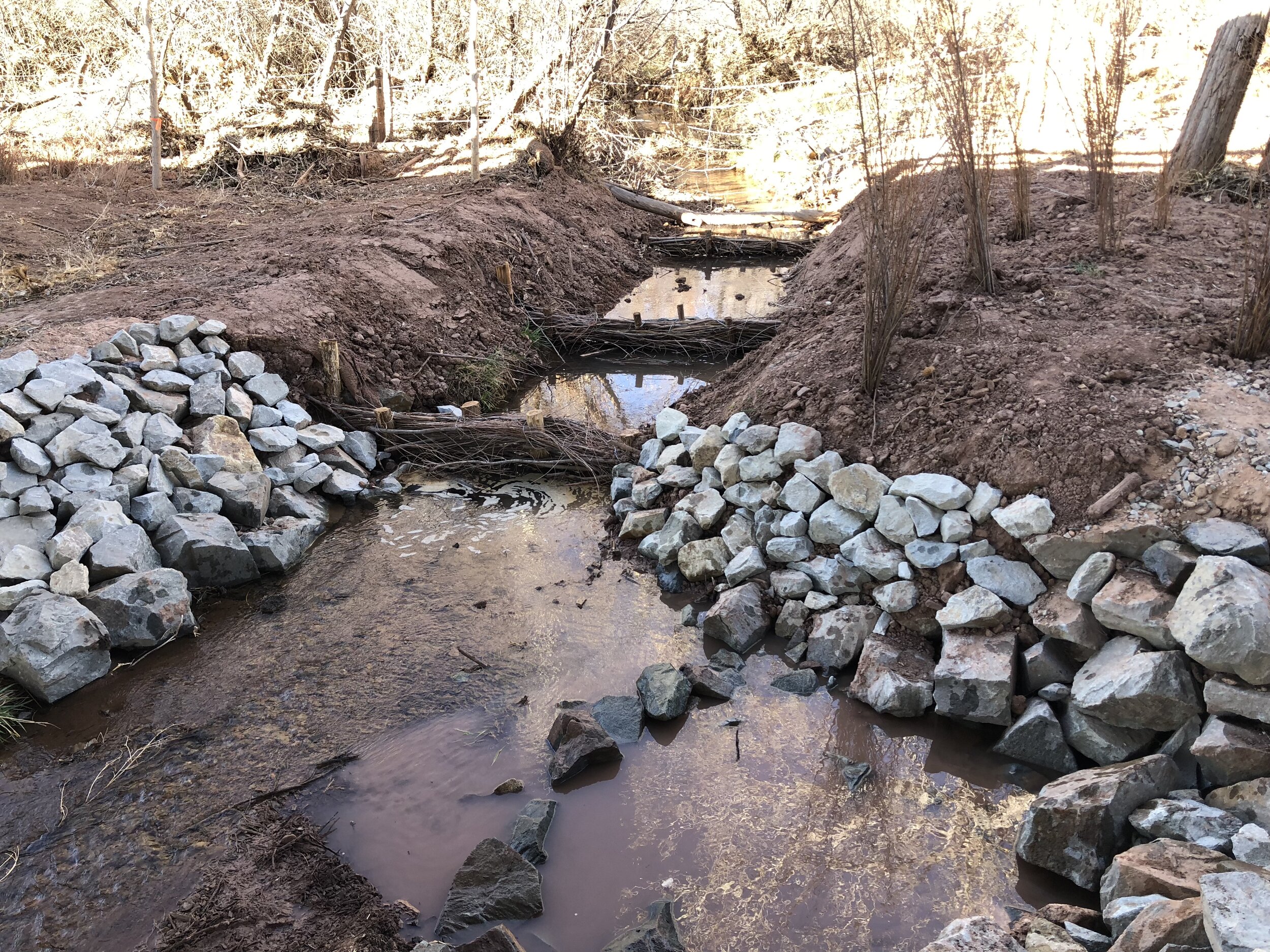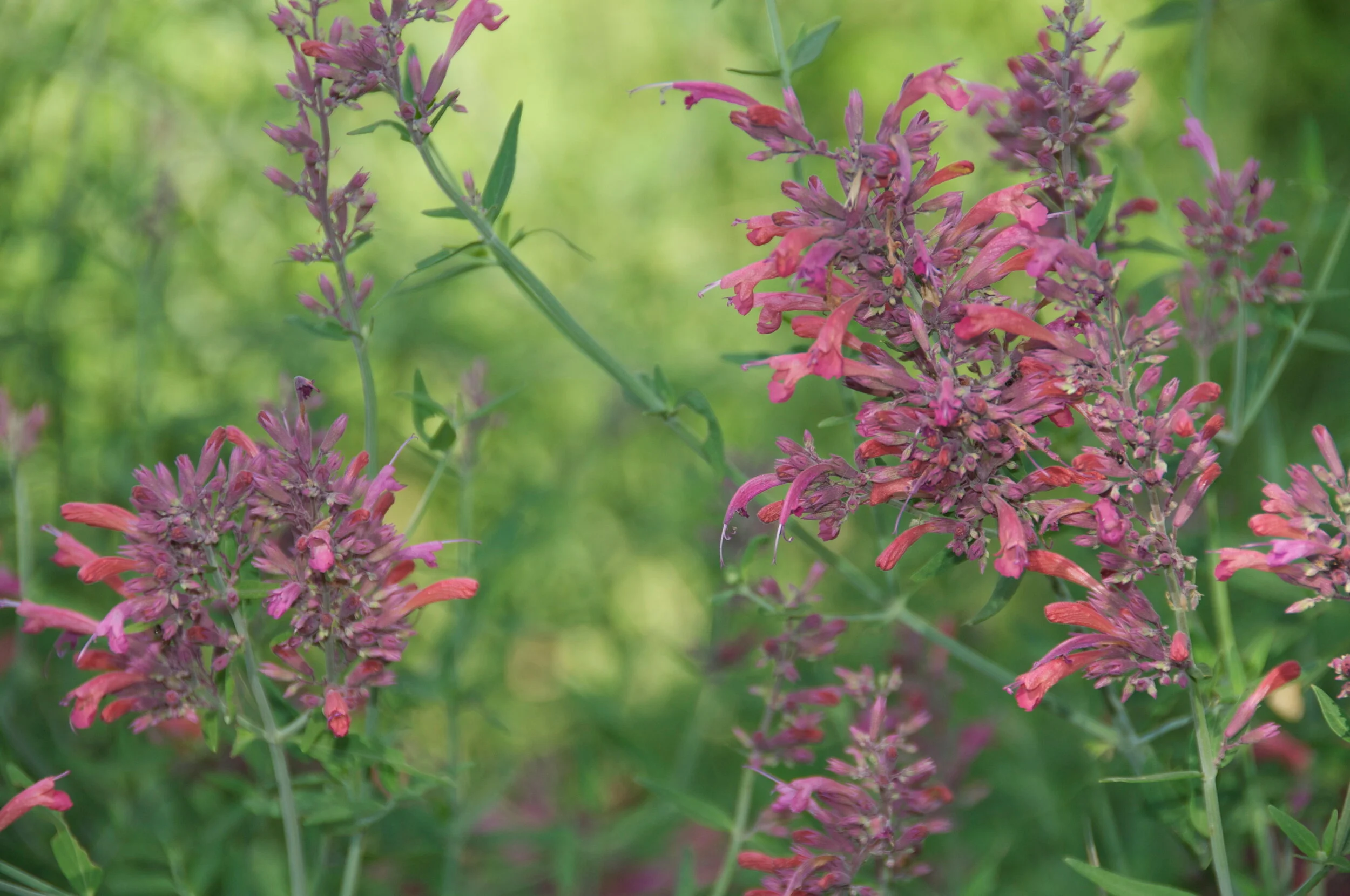If you’ve ever witnessed a thunderstorm in the desert, you have seen what it is that makes gardening and landscaping so challenging here.
As if the hot days, cold nights, baking sun and dusty soil aren’t tough enough, our ecosystem is characterized by infrequent, powerful rain events. Dry, poor soil becomes hydrophobic, which is why rainwater collects and moves quickly, sometimes causing great destruction. The desert has its own ways of coping with and utilizing rain, but human activities have both disturbed these processes and put our homes and properties in harm’s way. So, the ever-present question remains: now that we are here, how do we mitigate our impact on the local environment? If you ask a wildflower or a hummingbird, the answer is simple: capture water.
One of the main techniques we use for slowing down water is that of check dams. Typically made from rocks or branches, they reduce the velocity of rainwater so that it cannot carry precious topsoil away. This initiates a cascade of beneficial actions, starting with the accumulation of soil in previously-eroded places where it’s needed most. Water is allowed to infiltrate slowly, creating micro-oases where plants have a better chance at gaining a foothold.
Without supplemental irrigation, the vigor of these plants may rise and fall with the precipitation levels in any given month or year. That’s why selections of native grasses, wildflowers and forbs are important: they are already adapted to the mood swings of the desert. They fortify the area with deep roots and provide valuable wildlife habitat. And it won’t take long for the hummingbirds and pollinators to notice. Their arrival to a previously barren, eroded site feels like such a miracle, it’s enough to keep us building check dams all over New Mexico.




